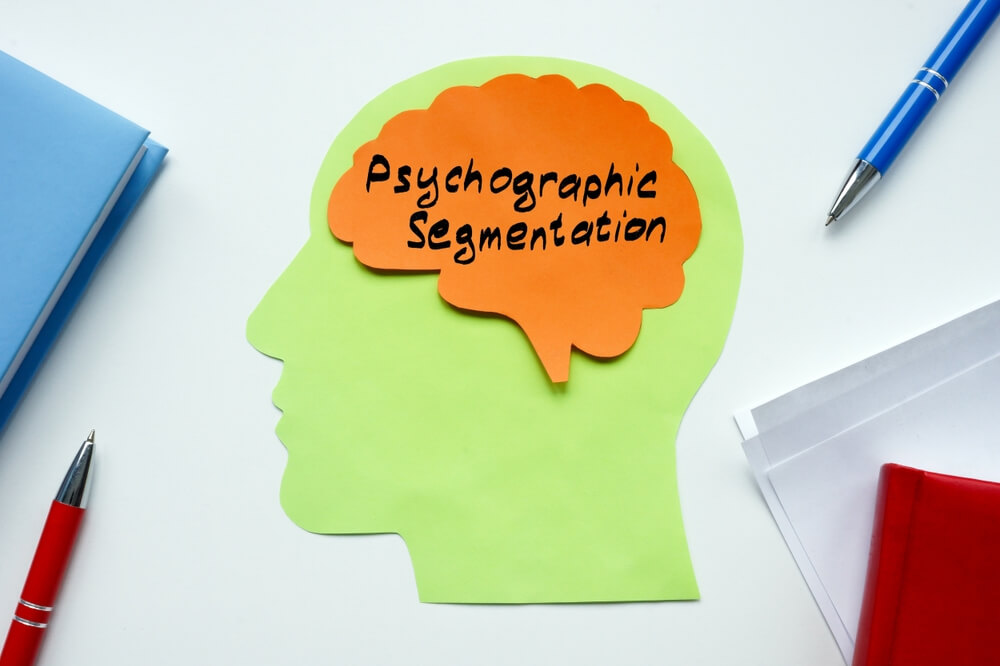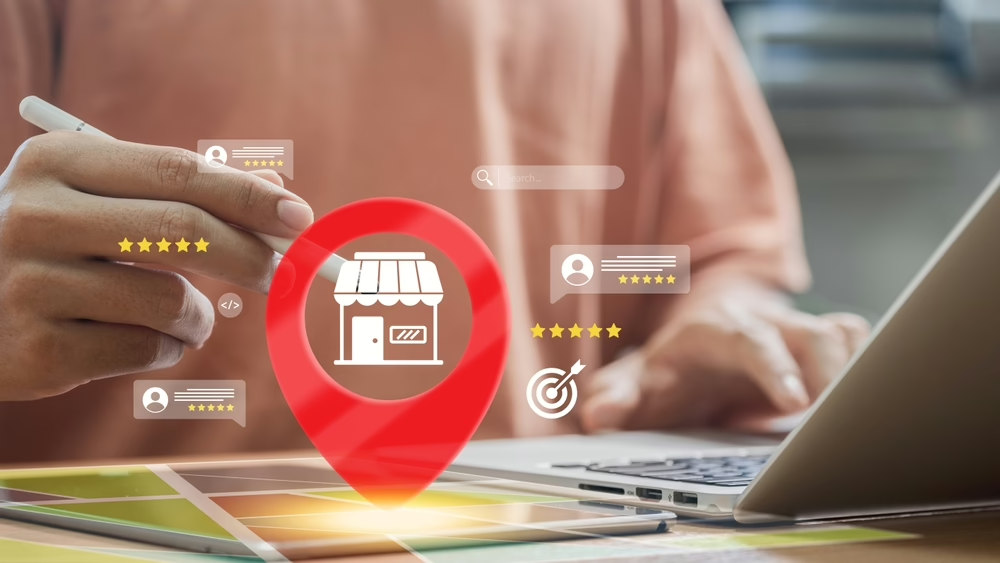
5 Best Uses for Psychographic Segmentation in Sales Analysis
Take your sales segmentation to the next level with psychographic segmentation techniques. Understand your audience better, target niches more effectively, and enhance your customer loyalty with this invaluable sales tool. Let our fractional sales management services experts explain how psychographic marketing can help your business.
This article explores this topic with the following:
 Psychographic segmentation categorizes customers based on their personality traits, values, interests, and lifestyles. Unlike demographic or geographic segmentation, which focus on external characteristics, psychographic segmentation is about the psychological aspects of consumers. This deeper understanding is critical in tailoring sales and marketing strategies. Key components of psychographic segmentation include:
Psychographic segmentation categorizes customers based on their personality traits, values, interests, and lifestyles. Unlike demographic or geographic segmentation, which focus on external characteristics, psychographic segmentation is about the psychological aspects of consumers. This deeper understanding is critical in tailoring sales and marketing strategies. Key components of psychographic segmentation include:
- Understanding psychographic segmentation
- Personalizing marketing messages
- Informing product development and innovation
- Enhancing customer engagement and loyalty
- Optimizing sales and distribution channels
- Using psychographics in competitive analysis
Need some direction for increasing sales? Watch this video to learn what DAP can do for you!
Understanding Psychographic Segmentation
 Psychographic segmentation categorizes customers based on their personality traits, values, interests, and lifestyles. Unlike demographic or geographic segmentation, which focus on external characteristics, psychographic segmentation is about the psychological aspects of consumers. This deeper understanding is critical in tailoring sales and marketing strategies. Key components of psychographic segmentation include:
Psychographic segmentation categorizes customers based on their personality traits, values, interests, and lifestyles. Unlike demographic or geographic segmentation, which focus on external characteristics, psychographic segmentation is about the psychological aspects of consumers. This deeper understanding is critical in tailoring sales and marketing strategies. Key components of psychographic segmentation include:- Personality traits: Analyze characteristics such as introversion or extroversion to understand buying behaviors
- Values: Identify what matters most to customers, such as sustainability or innovation.
- Interests: Look at hobbies or activities that customers like, including significant overlaps.
- Lifestyles: Understand the market’s routines, including work, leisure, and spending patterns.
1. Tailoring Marketing Messages
Psychographic segmentation is instrumental in hyper-personalizing marketing messages. Aligning marketing content with the lifestyles of various segments improves its effect on the audience. Customize content for psychographic segmentation with these strategies:- Develop marketing messages that reflect each segment’s unique personality traits, values, and interests. For example, content that emphasizes sustainability resonates more with environmentally conscious customers.
- Craft messages that align with your target segments’ core values and attitudes to enhance the content’s relevance.
- Match your strategies with the lifestyles of your market segments to seamlessly integrate your brand into their lives. This boosts engagement and the effectiveness of your campaigns.
2. Developing and Innovating Products
Psychographic segmentation plays a crucial role in guiding product development and innovation. Getting into a customer’s mind and understanding their psychological traits, values, and lifestyles helps businesses design products that meet their needs and desires. Here are three aspects of product innovation psychographic segmentation can influence:- Use psychographic insights to identify gaps in the market or enhance existing products. For instance, a company discovers a segment that values eco-friendly products. This information persuades the team to develop a new line of sustainable goods to capitalize on the niche.
- Design and manage products that align with the core values and interests of different segments. For example, a business catering to health-conscious consumers might focus on developing organic or low-calorie options.
- Consider how products fit into the audience’s daily lives. Customer-centered items that seamlessly fit and enhance people’s lifestyles are more likely to succeed.
3. Enhancing Customer Engagement and Loyalty
The art of converting prospects into loyal customers lies in the nuanced use of psychographic segmentation. This approach focuses on crafting connections that resonate with each customer segment’s values and desires. Fractional sales management services usually apply many strategies to increase engagement. These include the following:- Create resonant experiences. A fitness brand discovers a customer segment that values community. They host local fitness challenges and online group workouts to capitalize on this. These events tap into the audience’s shared values and foster a sense of belonging and loyalty.
- Develop loyalty programs that go beyond points. Traditional loyalty programs often fail to retain customers because they focus only on transactions. Psychographic segmentation reveals deeper motivations to stay. A beauty brand might find that a group seeks empowerment and self-expression. A loyalty program offering exclusive workshops could be more effective than points-based systems.
- Tap into the people’s emotions. A business applies psychographic insights to adjust its tone, style, and communication platforms. In the process, the messaging resonates more deeply with the audience, increasing visibility.
4. Optimizing Sales and Distribution Channels
Use psychographic segmentation to boost sales, enhance distribution channels, and extend reach. Suppose a skincare brand learns that some eco-conscious customers prefer to shop online. In response, the company sells more products on eco-friendly websites and online stores. Because the marketing tactic matches customers’ needs, it results in more online sales and loyal customers. How do you use psychology to optimize sales and distribution channels in your business? These strategies show you how to do it:- Choose channels that your audience uses. If a segment of your customer base that often shops online is also heavily engaged in social media platforms, marketing and building a brand on ecommerce platforms and Facebook to target this group is ideal.
- Align the brand with consumer lifestyles and habits. A segment that values convenience might prefer shopping via mobile apps. Adapting the revenue strategy to cater to these customers enhances the shopping experience and drives sales.
- Provide tailored shopping experiences. Understanding a segment’s psychographic profile helps craft unique shopping experiences. If cutting-edge technology draws suitable leads, integrating augmented reality into the ecommerce website is worth doing.
- Adapt based on feedback. The key to effective channel optimization is adaptability. Regularly assess the effectiveness of each channel. Adjust the strategy based on the gathered insights to align the brand with the market’s evolving preferences.
5. Analyzing Competition and Brand Positioning
Psychographic segmentation transforms how a business competes and positions itself in the market. It uncovers less-obvious yet deeply resonant marketing aspects that draw customers to a brand. This type of segmentation often leads to the following benefits:- Unearthing hidden niches: If your segmentation efforts reveal customers that seek quality products and prioritize ethical sourcing, this niche is now open to you. This discovery opens up new avenues for positioning products that align with these moral values. It sets the business apart in a market primarily focused on cost or convenience.
- Crafting a unique narrative: With a firm grasp of psychographic traits, a business weaves a solid brand narrative to evoke emotions and connect more deeply with the audience. This approach makes the company more relatable and attractive to its customer base.
- Differentiating authentically: Knowing a target segment’s subtle preferences and values helps carve out a unique market space without seeming disingenuous.
- Developing messages that draw emotions: The real power of psychographic segmentation lies in crafting messages that touch the heart. They resonate with the mind and the soul of the target audience.
Summing Up
Psychographic segmentation is crucial for refining sales strategies, from personalized marketing to competitive positioning. Embracing this approach leads to enhanced market performance and customer satisfaction. For more advanced ideas on how to use this technique, contact Digital Authority Partners (DAP) today. Our fractional sales management services team can unlock the full potential of your psychographic insights.Want To Meet Our Expert Team?
Book a meeting directly here



